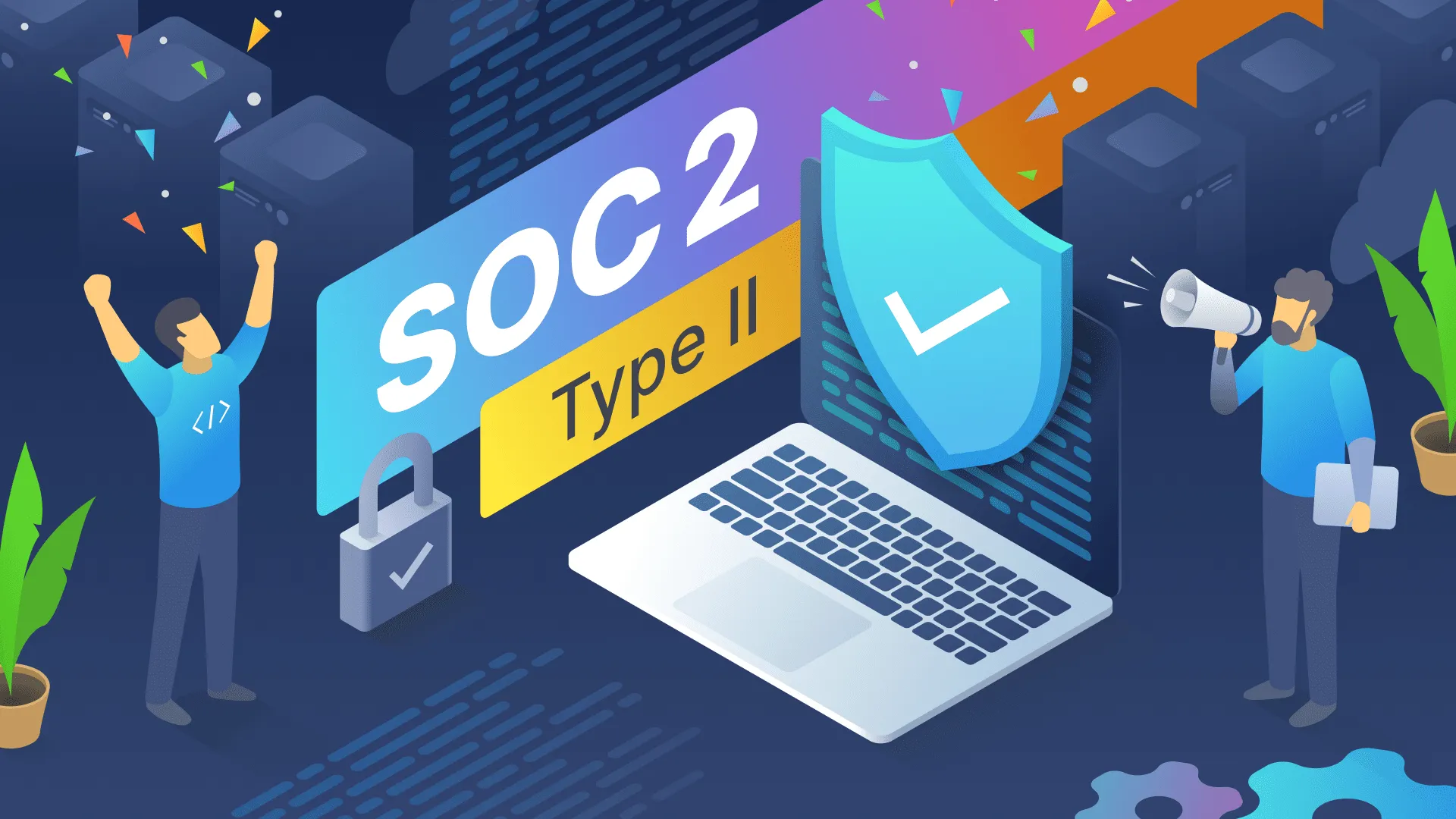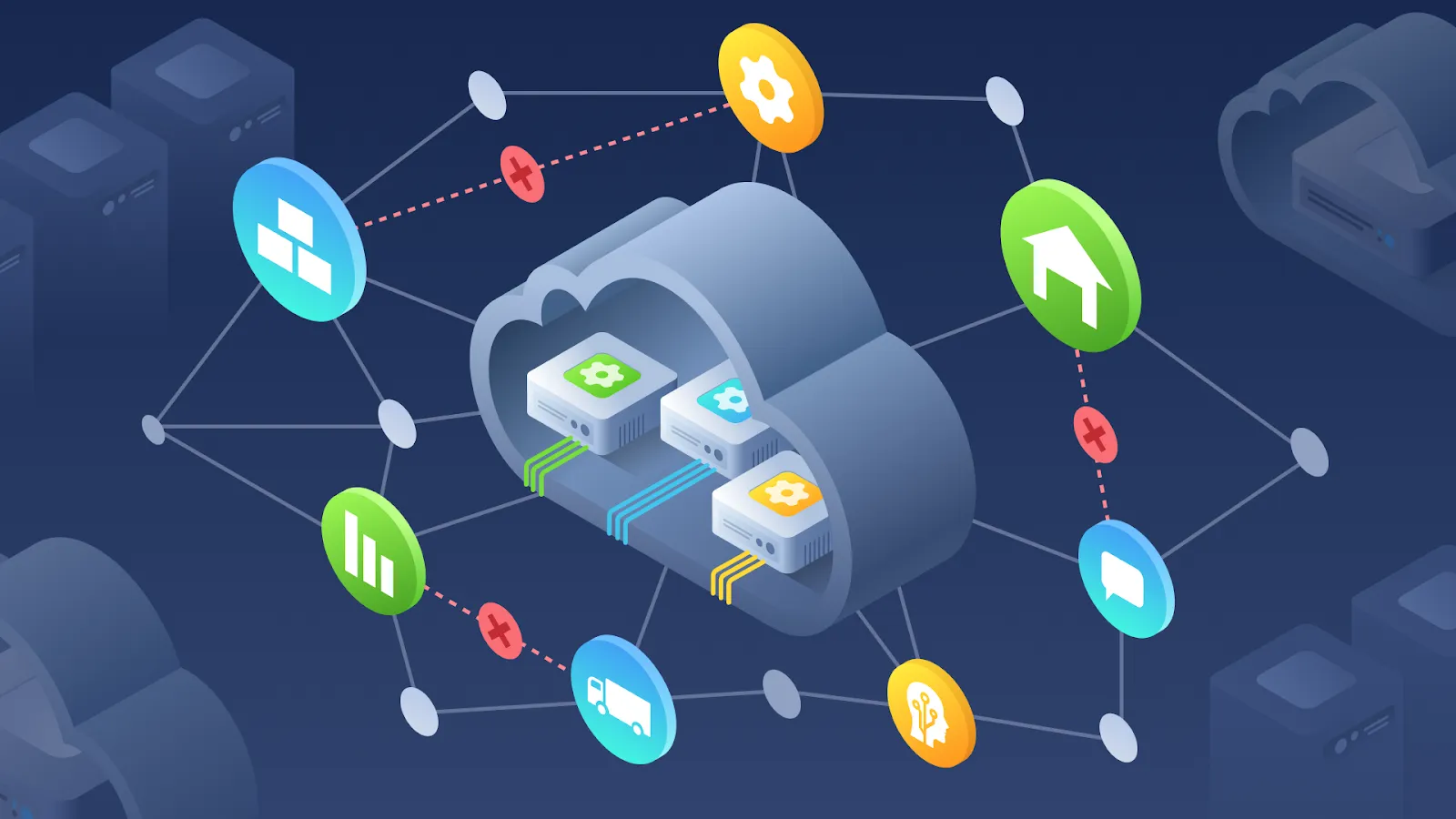Despite the industries modern companies operate in, they apply the client/server model for delivering products, resources, or information to their end-users. It means they should have servers for powering their business and relevant applications. That also requires raw compute capacity for hosting these applications and providing the necessary computing power. But when it comes to working with AWS, such servers are virtual. Thus, if you want to access them, you have to use a specific service called Amazon EC2 (Amazon Elastic Compute Cloud).
Today, we will learn more about Amazon EC2. In particular, we will analyze:
- Benefits of Amazon EC2 instances;
- How Amazon EC2 works;
- Types of Amazon EC2 instances;
- Amazon EC2 pricing;
- Amazon EC2 auto-scaling.
Amazon EC2 and its key benefits
Amazon EC2 provides customers with a secure and resizable compute platform in the cloud environment in the form of Amazon EC2 instances. This platform is also considered the broadest and deepest one. It offers a significant choice of the newest processor, storage, networking, along with operating systems and pricing models. That allows satisfying your workload requirements efficiently.
Suppose you are responsible for architecting your organization’s resources and supporting new websites. With typical on-premises resources, you will take the following steps:
- Spend costs upfront for purchasing software;
- Wait for the delivery of your servers;
- Install these services in your company’s physical data center;
- Provide all the required configurations.
On the other hand, thanks to an Amazon EC2 instance, customers use a virtual server for running their applications in the AWS Cloud. So what are the key Amazon EC2 benefits?
- An Amazon EC2 instance can be provisioned and launched within a few minutes;
- Your organization may stop using this instance after the workload running process is finished;
- Here, you will pay only for the compute time used by your company when an Amazon EC2 instance is running. It means that you will pay nothing when the instance is stopped or terminated.
- Since you pay only for the required server capacity, your organization can save significant costs.
Amazon Elastic Compute Cloud performs on top of relevant physical host machines. Such host machines are managed by Amazon Web Services thanks to the virtualization technology. When spinning up an EC2 instance, there is no need to take the entire host to yourself. After all, you share the host with many other instances called virtual machines.
Meanwhile, the Amazon EC2 hypervisor that runs on the host machine provides the appropriate sharing of the core physical resources among the virtual machines. The particular concept of sharing basic hardware is known as multitenancy. Thus, the Amazon EC2 hypervisor isolates virtual machines from each other because they share resources from the relevant host. That makes EC2 instances incredibly secure and separate.
How Amazon EC2 works
1. Launch
Firstly, you need to launch an instance. You have to select a template containing basic configurations for your Amazon EC2 instance. Such configurations involve the operating system depending on Windows or Linux, application server, and applications. Among the most popular are internal company applications, simple and complex web apps, various databases, and third-party software. Besides, you can choose the instance type which serves as the relevant hardware configuration of an Amazon EC2 instance.
2. Connect
Secondly, you should connect to your instance, and you can do that in several ways. For instance, your programs and applications provide numerous approaches to connecting directly and exchanging information. Also, users can log in and access the computer desktop for connecting an Amazon EC2 instance.
3. Use
After connecting to your instance, you may start using it. It means that you can run commands for installing software, adding storage, copying, organizing files, and more.
Types of Amazon EC2 instances
Each type of Amazon EC2 instance is optimized for various tasks. When choosing an instance type, you have to consider multiple specific requirements of your workloads and apps. After all, each instance type offers different combinations of CPU (central processing unit), memory storage, or networking capacity. That provides you with the flexibility to select the right combination of resources for applications.
Among Amazon EC2 instance types are the following:
General-purpose instances
These Amazon EC2 instances offer an appropriate balance of resources related to compute, memory, and networking. Your organization may use them for different workloads, including application and gaming servers, backend servers for enterprise apps, and small and medium databases.
Let’s imagine that your application has relatively equivalent resource requirements for compute, memory, and networking. Here, you may consider running this app on a general-purpose instance since it needs no optimization in all single resource areas.
Compute-optimized instances
This Amazon EC2 instance type is perfect for compute-bound applications that take advantage of high-performance processors. Similar to general-purpose ones, your company can use such instances for the following workloads: web, application, or gaming servers.
But the difference between the two groups is that compute-optimized applications are the right option for high-performance web servers, along with compute-intensive apps servers and dedicated gaming servers. Besides, compute-optimized instances are ideal for batch processing workloads that involve processing numerous transactions using a single group.
Memory-optimized instances
Such Amazon EC2 instances allow delivering fast performance for relevant workloads that ensure processing large volumes of data in memory. When it comes to computing, memory serves as a temporary storage area that holds all the information and instructions necessary for a CPU to complete actions. Therefore, before your program or app can run, it must be loaded from the particular storage into memory. This preloading process provides the CPI with direct access to your program or app.
Imagine that your workload requires preloading large datasets before you start running an app. Here, there may be a high-performance database that predicts conducting real-time processing of large volumes of unstructured information. In such use cases, you should think about using memory-optimized instances. After all, these Amazon EC2 instances help run workloads that have high memory requirements and obtain significant performance.
Accelerated computing instances
Accelerated computing instances implement hardware accelerators to conduct several functions more effectively compared to software running using CPUs. The most well-known examples of such functions are floating-point number calculations, graphic processing, or information pattern matching. Thus, these Amazon EC2 instances are perfect for workloads like graphics apps, game streaming, or application streaming.
Storage-optimized instances
The last Amazon EC2 instance type is the appropriate option for workloads that need high and consistent read/write access to large volumes of data on local storage. For example, workloads perfect for the relevant instances are distributed file systems, data warehousing apps, or OLTP (online transaction processing) systems. Finally, storage-optimized instances allow delivering numerous low-latency, random IOPS (input/output operations per second) to applications.
Amazon EC2 pricing plans
Thanks to Amazon EC2, your organization pays only for the compute time used. Below, there are different pricing options offered by Amazon Elastic Compute Cloud and related to various use cases:
On-demand
Amazon EC2 On-Demand pricing is suitable for short-term, irregular workloads. There can be no interruption of these workloads. Also, Amazon EC2 On-Demand Instances require no upfront costs or applying minimum contracts. Such instances constantly perform until you decide to stop them. That allows paying just for the compute time used.
The most common use cases for this Amazon EC2 billing plan are developing and testing apps and running apps with unpredictable usage patterns. Therefore, on-demand instances will not be the right option for workloads lasting longer than a year.
Amazon EC2 Savings Plans
The particular pricing plan helps your organization cut down compute costs. That is because it commits to an appropriate amount of compute usage during the 1-year or 3-year period. Such a term commitment leads to savings of about 66% over the mentioned on-demand costs. Besides, any usage up to the relevant commitment will be charged using the discounted plan rate - for instance, $10 per hour. Meanwhile, each usage beyond this commitment will be charged due to regular on-demand rates.
Reserved Instances
Amazon EC2 Reserved Instances serve as a billing discount you can implement to the use of On-Demand Instances in your organization’s account. For example, your company may purchase Standard Reserved and Convertible Reserved Instances for a 1-year or 3-year period. Or you can pay for Scheduled Reserved Instances for one year. But you will realize outstanding cost savings by purchasing the 3-year option. After the Reserved Instance term expires, you may continue utilizing an Amazon EC2 instance with no interruption.
Spot Instances
Amazon EC2 Spot Instances are suitable for workloads that have flexible start and end times. Also, such workloads can withstand interruptions efficiently. Spot Instances enables you to use spare Amazon EC2 computing capacity, which provides cost savings at about 90% of the On-Demand pricing plan.
However, the critical thing is that the instance may be reclaimed by Amazon Web Services at any time if needed. Besides, you obtain a two-minute warning regarding finishing your work and saving state, but you can usually continue later. Thus, when selecting Spot Instances, you have to ensure that your workloads will tolerate potential interruptions. For instance, batch workloads are perfect for that.
Dedicated Hosts
Dedicated Hosts are considered physical servers that provide Amazon EC2 instance capacity and are fully dedicated to your organization’s use.
In addition, you may use current per-socket, per-core, and per-VM software licenses for maintaining the necessary license compliance. Your company can pay for On-Demand Dedicated Hosts, along with Dedicated Hosts Reservations. But among all the Amazon EC2 instance pricing plans covered, Dedicated Hosts serve as the most expensive option.
Amazon EC2 Auto Scaling
If your organization wants to deal with the automatic scaling process, you should use Amazon EC2 Auto Scaling. This AWS service offers relevant functionality for Amazon EC2 instances.
Trying to access a website that cannot load and times out frequently means that this website is receiving more requests than it can handle. Thanks to Amazon EC2 Auto Scaling, you can automatically add or remove required instances depending on changing application demand. After all, the ability to scale Amazon E2 instances automatically if needed allows maintaining a greater sense of app availability.
When working with Amazon EC2 Auto Scaling, your company may use these approaches:
- Dynamic scaling (that corresponds to changing demand);
- Predictive scaling (that automatically schedules the correct number of instances due to predicted demand).
Wrap up
With Amazon EC2, your organization gains the opportunity to spin up and down relevant virtual servers known as EC2 instances. When launching your Amazon EC2 instance, you have to select the instance type and consider various pricing models available. At the same time, you may use instances created for your company’s specific purposes. The particular categories include general-purpose, compute-optimized, memory-optimized, accelerated computing, and storage-optimized.
In addition, you can resize instances for scaling them vertically or launch new ones and add them to the existing pool for scaling horizontally. Finally, your organization can provide automated horizontal scaling thanks to Amazon EC2 Auto Scaling.
How AgileVision can help
As an official AWS Consulting Partner, AgileVision has helped companies of different types and sizes manage their AWS services. Are you considering launching new Amazon EC2 instances to meet your specific business requirements or need advice on setting up automated scaling?




